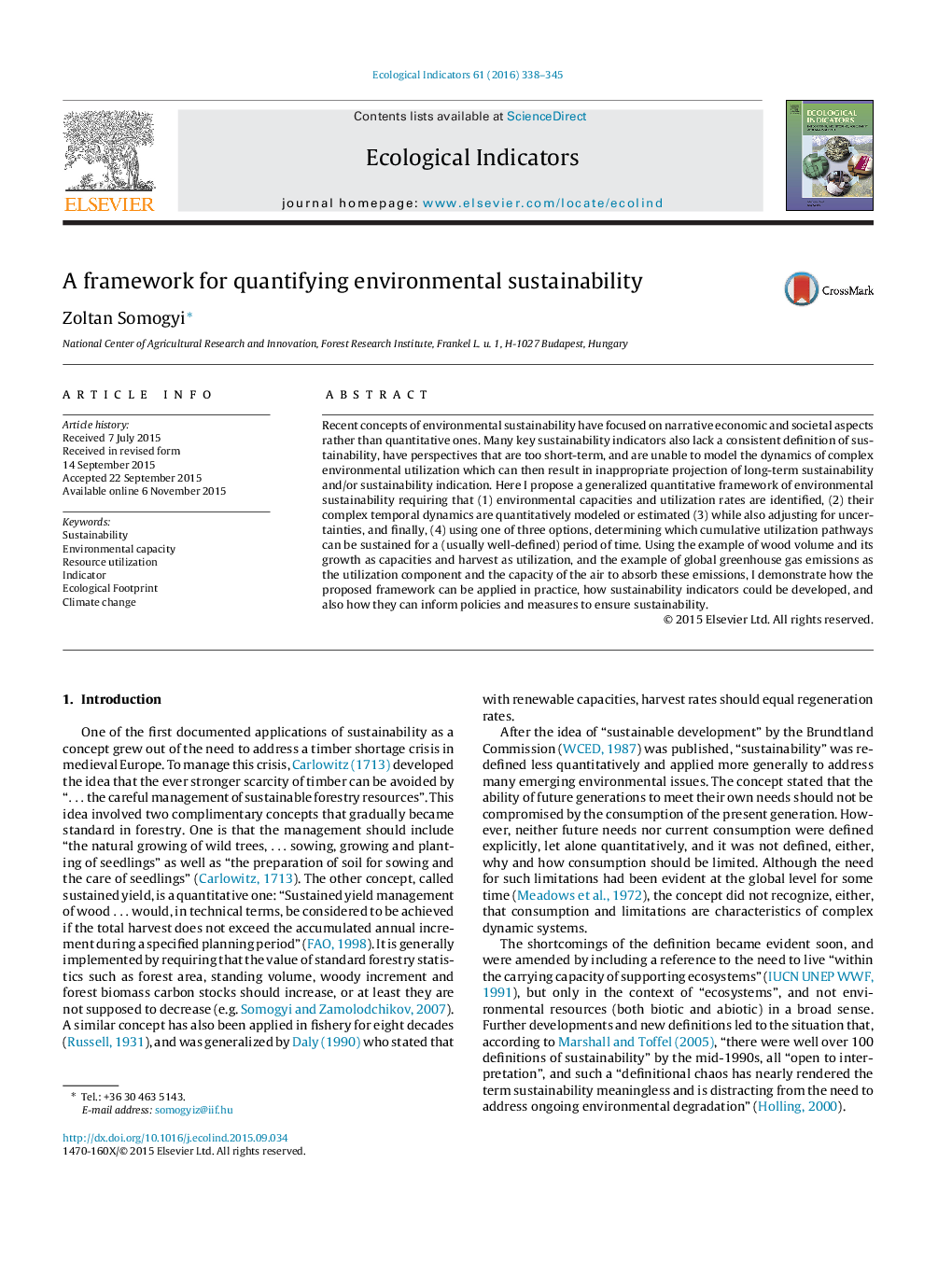| Article ID | Journal | Published Year | Pages | File Type |
|---|---|---|---|---|
| 6293602 | Ecological Indicators | 2016 | 8 Pages |
Abstract
Recent concepts of environmental sustainability have focused on narrative economic and societal aspects rather than quantitative ones. Many key sustainability indicators also lack a consistent definition of sustainability, have perspectives that are too short-term, and are unable to model the dynamics of complex environmental utilization which can then result in inappropriate projection of long-term sustainability and/or sustainability indication. Here I propose a generalized quantitative framework of environmental sustainability requiring that (1) environmental capacities and utilization rates are identified, (2) their complex temporal dynamics are quantitatively modeled or estimated (3) while also adjusting for uncertainties, and finally, (4) using one of three options, determining which cumulative utilization pathways can be sustained for a (usually well-defined) period of time. Using the example of wood volume and its growth as capacities and harvest as utilization, and the example of global greenhouse gas emissions as the utilization component and the capacity of the air to absorb these emissions, I demonstrate how the proposed framework can be applied in practice, how sustainability indicators could be developed, and also how they can inform policies and measures to ensure sustainability.
Keywords
Related Topics
Life Sciences
Agricultural and Biological Sciences
Ecology, Evolution, Behavior and Systematics
Authors
Zoltan Somogyi,
